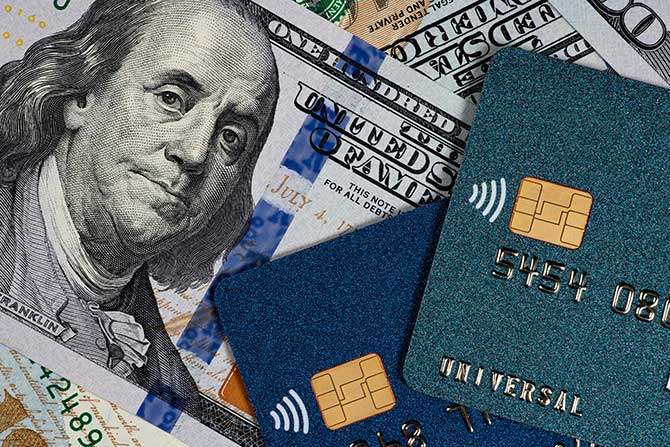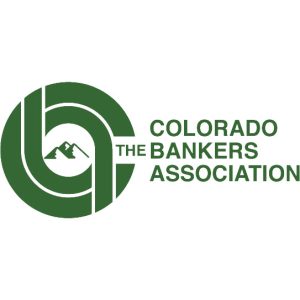Historically, businesses of all types have been driven to grow by attracting new business from “net new” prospects. While this growth strategy is, and always will be, mission number one on everyone’s list, there is a wealth of potential within a business’s existing customer base. It has been proven in numerous studies that it is far less expensive for a business to keep and expand its existing customer base than to bring on net new customers.
Take the case of the bank’s ATM/debit program, a product that has evolved into perhaps the most publicly facing product a bank offers. In 2020, the average U.S. consumer made 68 purchases and payments each month — and more than a third of those transactions were made with a debit card. Cardholders present their cards for payment, either physically or virtually, on average almost 25 times per month. Most community banks see a card-to-DDA penetration rate of 75% with an activation delta of between 15% and 25%. Many in the industry would suggest that a penetration percentage north of 90% with an activation percentage delta of 10% to 15% is realistically attainable.
The banking industry has been working with debit cards, primarily Visa and Mastercard, since the mid-1980s and within the community banking industry since the early 1990s. Community banks, in large measure, initiated programs during the 90s with the goal of breaking even. Reluctance to the product was the perception of risk, while the adoption of a program was driven by customer desire and marketplace competition. Interestingly, however, a debit card program epitomizes a bank’s business model — namely, income generation through risk management.
An issue of concern associated with a debit card program that many community banks voice is the perceived lack of control. A bank’s ability to manage risk rests on its ability to directly control the risk the bank is accepting. Debit cards put that control in a third party’s hands, which for many community bankers, is an unsettling prospect to accept. It’s no secret that the debit card program is a “house of cards” that is directed and controlled by the two leading card companies: Visa and Mastercard. The rules of engagement are determined by those two companies, and those rules are often perceived as overwhelmingly designed to benefit the merchant world. In short, if there are no merchants accepting cards as a form of payment, the entire product falls flat.
Another issue that plagues a debit card program is the notion that the program has an “out of sight, out of mind” element. In other words, transaction authorization and transaction settlement occur automatically. The process happens almost always without worry. In the end, less than 20% of all debit card transactions are fraudulent. Taking into account some 87 billion purchase transactions U.S. consumers perform with debit cards each year, the “worry-free” percentage is quite high, which exacerbates the auto-pilot perception of the programs.
Fraud is a genuine concern that constitutes the seedy underbelly of the debit card industry. As mentioned earlier, Visa and Mastercard have written dispute and chargeback rules that clearly benefit the merchants by design. Banks are required to jump through a number of hoops and endure seemingly endless timeframes to find a resolution to a disputed transaction that often works to the bank’s disadvantage. Never forget that the debit card product is based on the idea that a merchant pays a fee to the card-issuing bank in exchange for a guarantee that the transaction amount will be paid. The transaction’s authorization and corresponding settlement justify that merchant fee and provide income to the issuing bank in exchange for that payment guarantee.
Visa and Mastercard market a debit card program through which the income a card-issuing bank generates is an offset to the risk the bank accepts. This premise assumes that the expense the bank takes on when issuing debit cards is a cost of doing business. Add now the primary sellers of debit card programs — regional switch networks and processors — that ostensibly sell the debit card program under the guise of the income covering the program expense. The result is a single source of income from the merchant interchange and two expense buckets: a fraud bucket and a program expense bucket.
Is there enough coming from the bank’s income spigot to fill each of the expense buckets? The short answer for the overwhelming number of community banks is yes. In some cases, this is difficult to plainly see depending on the method a bank’s processor uses to summarize the monthly income and expense. The norm now is that a bank’s transaction interchange income is credited daily, which is a good thing. However, the bank’s processor invoices the bank on a monthly basis. This creates a visual disparity between seeing the monthly expense as a lump sum and not necessarily seeing the income as a monthly lump sum. Consequently, many banks lose sight of both the positive monthly net revenue a debit card program provides and the increased potential revenue the program could generate by sharpening the program’s management internally.
How, then, does a bank work within the confines of a third-party rule maker to increase its element of control to maximize the potential a debit card program brings to the bank’s bottom line? Here are some important questions every bank should ask to determine their commitment to a profitable and efficient debit card program:
How does your bank work through the debit card application process?
- Is a card application automatic?
- Are employees encouraged/incented to sell the debit card program?
- What is your bank’s underwriting process for debit cards?
Is there an internal process in place to follow up on non-activated card accounts?
- How frequently are issuance reports reviewed?
- What is the internal procedure for follow-up calls to non-activated card accounts?
How does your bank oversee the program’s risk assessment?
- What are your bank’s policies and procedures for tracking fraud trends?
- How quickly does your bank act on trends discovered locally or nationally?
Does your bank budget for debit card loss?
- You might be surprised to know that many banks fail to budget for debit card losses. Establish a method of accounting for quarterly and annual risk no differently than you do for loan losses.
How frequently, if at all, do you assess your program’s outstanding card portfolio?
- Do you measure card count versus active cards and statused cards?
What types of marketing programs has your bank implemented to increase your program’s activity and profitability?
- How does your bank encourage your cardholder accounts to be “top of wallet”?
- Is your bank’s card the first card your customers use?
- Do you issue business debit cards or Health Savings Accounts?
- Business debit cards generate interchange revenue for the card-issuing bank at a greater rate than a consumer card. How many consumer cards are you issuing to DBA accounts, sole proprietor accounts or agricultural accounts that could be converted into a business debit card generating higher income?
Does your bank issue contactless cards?
- COVID has heightened customers’ awareness of contactless capabilities and shown the speed and ease of a contactless transaction.
What is your bank’s appetite for tokenization and mobile wallets (Apple Pay, Samsung Pay, Google Pay)?
- Customer and marketplace demand will tend to dictate your appetite, but the marketplace is moving in this direction.
Heightened emphasis on better internal procedures, increased portfolio review, employee incentives, accounting for debit card fraud and loss and a marketing plan that aligns with your bank’s strategic plan will position you to make the most of the debit card program you have. The benefits go far beyond the debit card program and dovetail into the bank’s overall service mission.
A debit card program may seem to be auto-pilot, but mindfulness, internal processes and effective marketing can pay huge dividends and increase income and, ultimately, customer loyalty in the process.
Eric Hallman is Vice President — Bank Card Sales & Support at Bankers’ Bank of the West. He can be reached at ehallman@bbwest.com.







